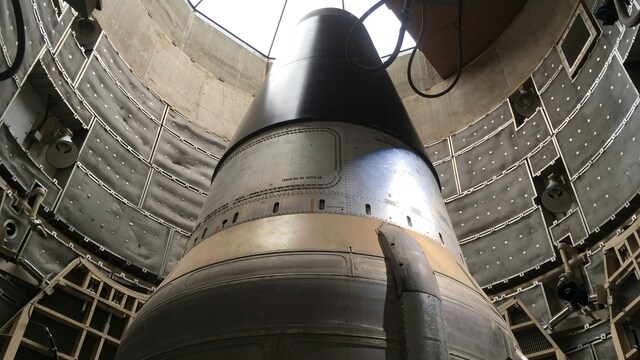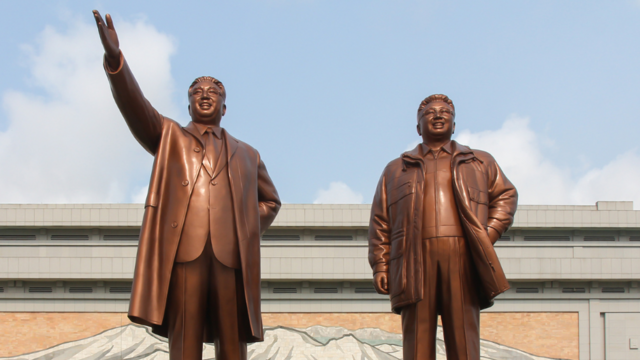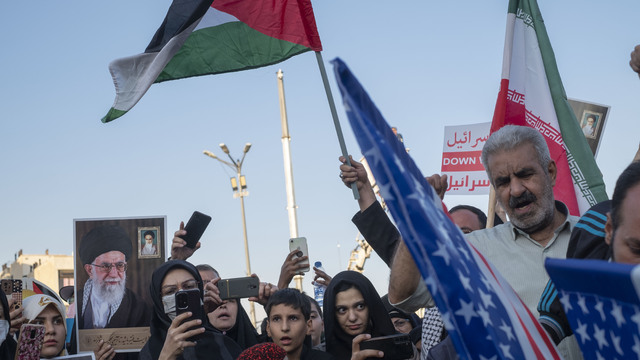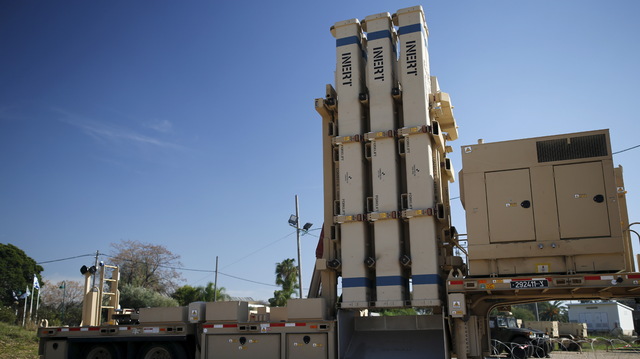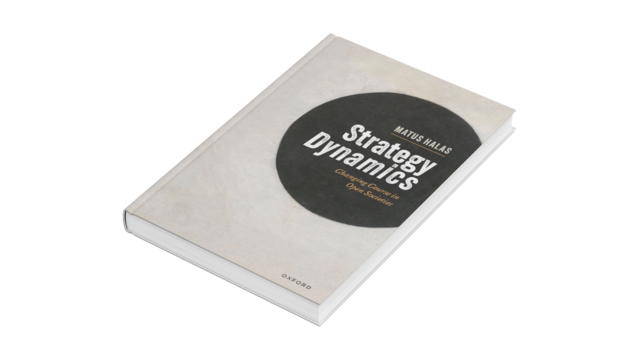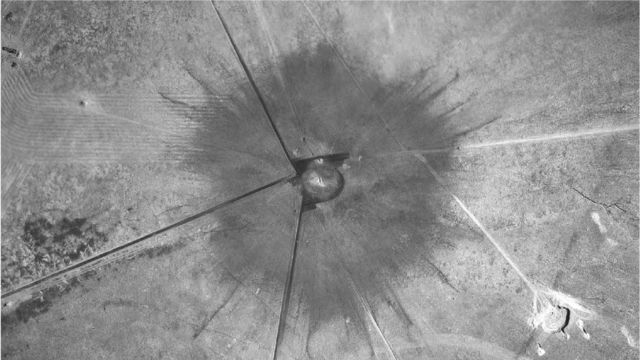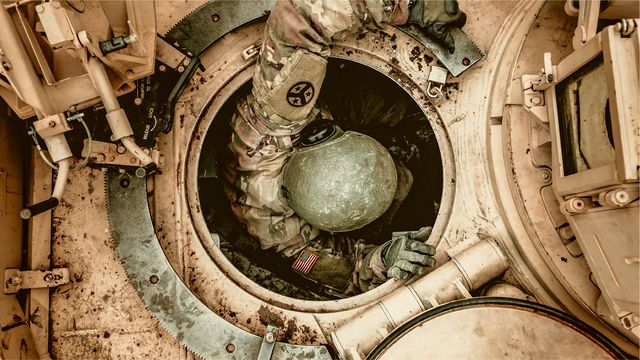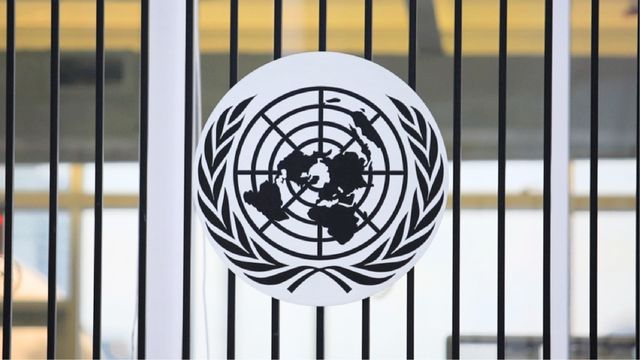The nuclear weapons ban convention and the North Atlantic Treaty Organization
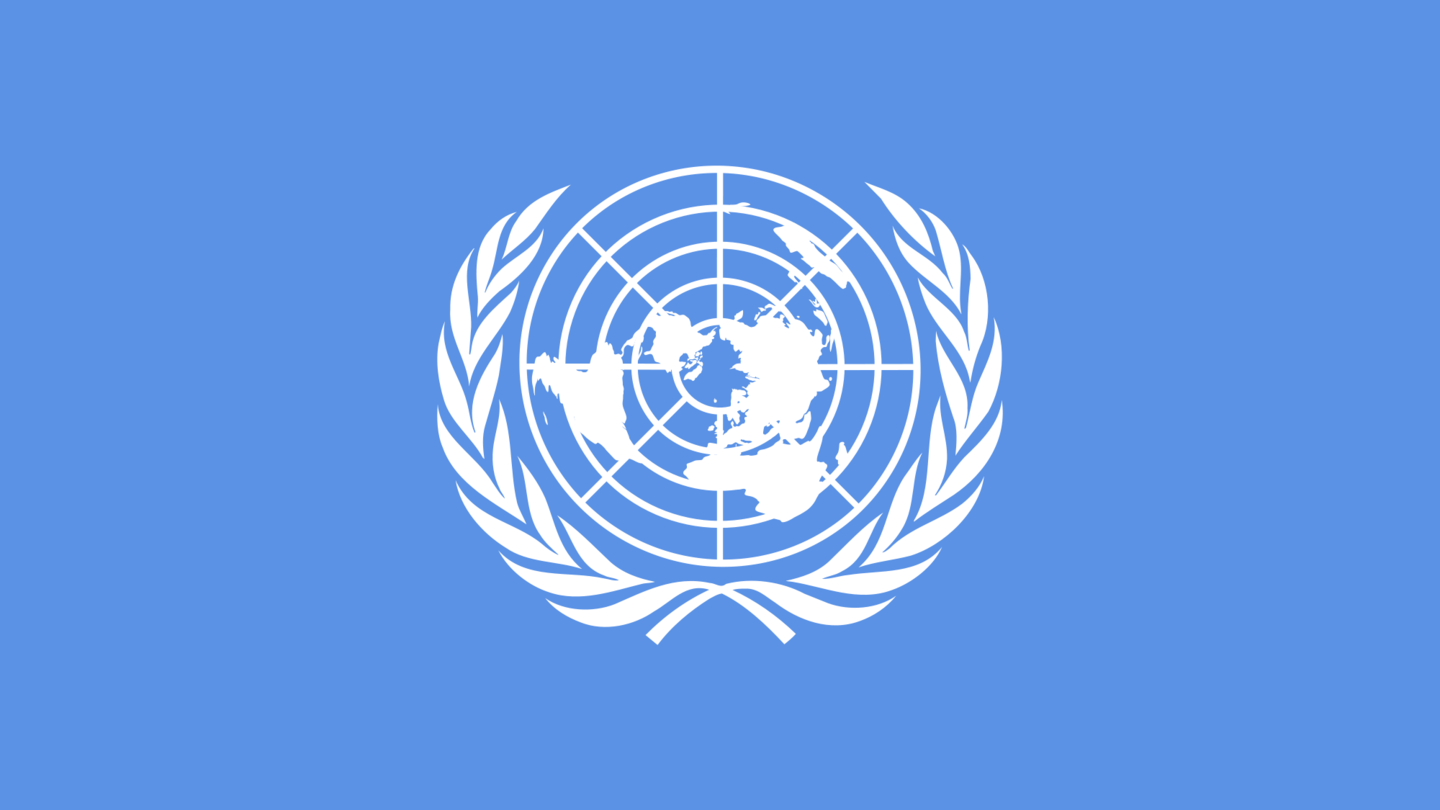
This year, there will be an international conference (March 27th – 31st and June 15th – July 7th) in the headquarters of the UN in New York. The conference will have a mandate to negotiate an agreement to ban nuclear weapons. Besides being attended by member states of the UN, the conference will be attended by representatives of some non-specified international organizations and civic society representatives. The conference will be held on the basis of a resolution „Taking Forward Nuclear Disarmament Negotiations" which calls on the world to achieve progress in just that area. Its importance especially resides in the wording of some paragraphs of the operational part, which contain the decision to convene the above mentioned conference in 2017 to negotiate a legally binding instrument banning nuclear weapons, which should lead to their complete elimination. The content of the resolution has been influenced by recommendations of the final report of the Open-Ended Working Group (OEWG), which held talks in Geneva in the first half of 2016. It was to assess new legal measures and the needed standards for reaching a world without nuclear weapons. However, no state possessing nuclear weapons attended the talks, and the nuclear weapon states’ refusal to attend was an act of disapproval of the OEWG mandate. In contrast to that, about twenty partner and Alliance non-nuclear states (e.g. Australia, Japan, Canada, Germany, Poland, Hungary, Italy, the Netherlands, Spain and Slovakia) attended the talks. There was no official representative of the Czech Republic there, however.
During the First Committee talks, Austria presented a resolution which was sponsored by around 50 countries led by Brazil, Ireland, Mexico, Nigeria and South Africa. The Czech Republic was not among the sponsoring states. The resolution was adopted on October 27th by a majority of votes (123 for, 38 against, and 16 voters abstained from voting). The DPRK was the only one out of the nine nuclear states that voted in favour of the resolution. The PRC, India and Pakistan abstained from voting, and the rest of the nuclear states (France, Israel, the RF, the USA and the United Kingdom) voted against its adoption. Out of the entire negative voting pattern of the Alliance non-nuclear states, including the Czech Republic, an exception was presented by the Netherlands, which abstained from voting. This happened in spite of an acute appeal of the U.S. delegation to NATO, which was sent on October 17th 2016 to all Alliance countries in a non-paper form, asking them to vote unequivocally against the resolution’s adoption and not to attend the UN Conference in 2017. The U.S. document also contained information on the anticipated impacts on Alliance deterrent policy and strategy following the adoption of the treaty (see the passage “The Expected Negative Impacts on NATO Deterrent Policy and the Activity of the Alliance Nuclear Powers”). It is worth mentioning that the resolution has been supported by the European Parliament with its own resolution adopted on October 27th 2016 (415 for, 124 against, and 74 MPs abstained from voting), which, inter alia, asked member countries to engage in “constructive participation” in the planned conference talks in 2017.
The next vote pertaining to the mentioned resolution and other resolutions from all six Committees of the 71st UN General Assembly was held at a plenary session on December 23rd 2016. The above mentioned resolution was approved once again with a majority of votes (113 countries voted for it, 35 against it, and 13 countries abstained from voting). The attitudes of the above mentioned nuclear states, including the Alliance member the Netherlands, were not changed since their vote at the First Committee.1
The supposed treaty content
On the basis of the wording of the proposed elements in Annex II of the above mentioned final report of the Open-Ended Working Group (OEWG), it is supposed that the new international law instrument should primarily contain significant prohibiting provisions. Further, it should include passages pertaining to the provision of assistance to victims of the use and testing of nuclear weapons, and to submitting declarations about possessed nuclear weapons and their stockpiles, nuclear material, nuclear facilities and nuclear weapon delivery vehicles. The treaty will also deal with phases for elimination; further verification measures; rights and obligations of individuals, including their criminal responsibility for their conduct in contradiction to the obligations stated in the Treaty and, on the other hand, their legal protection in the case of their informing about violations of those obligations; data on the establishment of an implementing international authority; resolving disputes; national implementing measures and international cooperation, and other things.
Under the general obligations and bans, the legal amendment should primarily ban the development of nuclear weapons; related tests, including subcritical experiments and computer simulations which do not require the performing of regular nuclear explosions; and the production, acquisition, possession, stockpiling, transfer, use and threat of use and production of weapons-usable fissile material. The bans applicable to the use or the threat of use of nuclear weapons would not allow the Treaty countries to participate in nuclear war planning or in the targeting of nuclear weapons or the training of personnel to take control of and use the nuclear weapons of another state. The bans applicable to the development and production of nuclear weapons would probably include the adoption of a measure to prevent the using of new technologies for the modernization of already existing nuclear-weapon-systems, including a ban on nuclearweapon research and development. This ban could also prevent testing of nuclear weapons, including the above mentioned subcritical and other testing means.
The nuclear weapon states should also stop their development and qualitative enhancing of nuclear weapons, their means of delivery and the related infrastructure. This group of limitations would also include a ban on financial or other participation in the production of nuclear weapons and a ban on activities related to utilizing of so-called double-use technologies (for conventional and nuclear weapons), while preserving the rights of all states to the peaceful use of nuclear energy. The ban on operational deploying of nuclear weapons would also include a ban on their deployment in other countries and would also not allow entry permissions for vessels with nuclear weapons in ports and territorial seas, or the entry of aircraft with nuclear weapons into the national airspace of the countries stated in the Treaty. The ban on production of any fission material used for military purposes would include, among other things, placing the existing fissionable material in the comprehensive safeguards system of the International Atomic Energy Agency (hereinafter IAEA) and also would include a ban on financing of nuclear-arms activities. The ban would also apply to providing financial aid to countries and non-state actors, supporting them and inciting them to carry out the above mentioned operations.
The text would probably likewise include provisions for assistance to victims of the use and testing of nuclear weapons and the establishment of an international agency that would obviously take part in a close cooperation with the IAEA in order to verify the fulfillment of treaty obligations. Within that framework other authorities would be employed (the Conferences of Treaty Parties, the Executive Council and the Technical Secretariat). The expected phases of the nuclear weapons’ elimination should include, firstly, taking nuclear weapons off alert, and then removing weapons from deployment and nuclear warheads from their delivery vehicles, removing and disfiguring the “pits” and placing the fissile material under the IAEA international control. The text will surely contain also significant provisions regarding the conditions of the Treaty’s adoption and its coming into effect and other classic final provisions. The supporters of the treaty’s achievement will probably strive to keep it from meeting the same destiny as the Comprehensive Nuclear-TestBan Treaty (hereinafter CTBT), which still has not entered into force although it was presented for signing already in 1996. The reason is that out of the 44 countries listed by name in Appendix no. 2, whose signature and ratification are necessary for the CTBT to come into force, so far 8 countries have not signed the Treaty (India, the DPRK, and Pakistan) or have signed it, but not ratified it (China, Egypt, Iran, Israel and the USA).2
The expected negative impacts on the deterrent policy of NATO and the activity of Alliance nuclear powers
From the point of view of the USA, representing the main Alliance nuclear power, and NATO as such, the expected range of the treaty’s obligations is the principal challenge for the further existence of the Alliance policy of nuclear deterrence and the general unity of NATO in the event that other non-nuclear Alliance countries would gradually become parties to the treaty. As is well known, the Alliance’s deterrence policy resides in a combination of nuclear and conventional weapons, representing a basic element of the entire NATO strategy, and a necessary condition for this is the continuing validity of the statement that as long as there will be a presence of nuclear weapons, NATO will remain a nuclear alliance (see Article no. 17 of the Alliance’s Strategic Concept from 2010). The new agreement, which would delegitimize and stigmatize not only nuclear weapons, but also their modernization programmes, including the means of delivery, has become incompatible with the above mentioned deterrent policy and strategy.
The Treaty could also have a negative impact on the range of the Alliance presence during the negotiations of one of the most significant political and advisory bodies of NATO, which is the Nuclear Planning Group (hereinafter NPG) together with its supreme advisory body – the High Level Group (hereinafter HLG). Problems could also arise during the filling of functional positions regarding nuclear weapons, e.g. positions at the two strategic military headquarters – Allied Command Operations (ACO) – and Allied Command Transformations (ACT). The Treaty provisions would also be complicated by the existing advanced deployment of the American tactical weapons in the form of gravity bombs in five European countries (Germany, Italy, Belgium, the Netherlands and Turkey), including the related Alliance concept of sharing the nuclear capacities with the participation of the above mentioned non-nuclear weapons states on the basis of the Nuclear Sharing Arrangements. The issue here is the training of their pilots in piloting so-called double-use aircraft, i.e. as means of delivery of nuclear and possibly conventional weapons.
The Treaty may also impede the transit of the U.S. aircraft through Alliance airspace for the transfer, maintenance and upgrade of the U.S. nuclear weapons and components. As mentioned above in the U.S. appeal addressed to the Alliance countries, the general treaty bans could also “prevent Allies from providing conventional support to nuclear operations”. According to the American evaluation, the adoption of the Treaty could have “a direct impact on the U.S. ability to meet its NATO and Asia/Pacific extended deterrence commitments and the ability of our allies and partners to engage in joint defense operations with the United States and other nuclear weapon States.” The phrase “other nuclear weapon States” is understood here as referring to the United Kingdom and France, which, nonetheless, is the only Alliance country that has not attended the above mentioned NPG. According to Article no. 18 of the already mentioned Alliance Strategic Concept from 2010 the United Kingdom and France have the status of Independent Strategic Nuclear Powers with a deterrent task, and thus they contribute to the general Alliance deterrence policy and security. The Treaty’s prohibitions could also include prohibitions of Alliance exercises aimed at ensuring the security of nuclear weapons and also at increasing the Alliance’s ability to provide an effective operational deployment of the weapons in the event of a crisis or conflict. Vložit do citace Defense Impacts of Potential United Nations General Assembly Nuclear Weapons Ban Treaty. United States non-paper, NATO-North Atlantic Council, 17. October 2016, NATO unclassified, Notice, Annex 2, AC/333- N(2016)0029 (INV), Committee on Proliferation (CP).
Further predicted developments
Taking into account the predominant support of the above mentioned resolution, we can expect the sponsoring and other non-nuclear countries will succeed in negotiating and adopting the nuclear weapons ban convention. It will probably happen despite the noticed absence of the majority of the nuclear states at conference talks and the expected refusing attitude of the present Alliance and partner countries, probably including the Czech Republic. It cannot be excluded that the Treaty might be presented to the member states for signing already during the upcoming 72nd UN General Assembly. The supporters of the treaty will probably sign it speedily, and initiate the internal ratification process, and eventually they will incorporate the Treaty’s provisions into national legislation.
Under the given circumstances, the nuclear powers and their allies and partners can face various challenges, while the ongoing support of nuclear weapons possession and the concept of nuclear deterrence policy continues. The effects of the existence of the treaty may become evident in, e.g., normative, legal, economic and social areas. It is also possible to presuppose that there will be increased pressure from parliaments on the governments of the above mentioned countries in order to push them to adjust themselves to the new situation in correspondence to the effort to create a new security order. It should now exist without the privileged position of the five so-called Declared Nuclear States (permanent member states of the UN Security Council), as their status and simultaneous inequality in terms of positions in relation to the Treaty’s non-nuclear states are fixed by the Treaty on the Non-Proliferation of Nuclear Weapons (NPT). That new world order should be based on dialogue, an equal respect for the security interests of all countries, transparency, accepting confidence building measures and so on. The mutual relations and attitudes of the USA and the Russian Federation, which possess more than 90% of all nuclear weapons, will play a deciding role in the following nuclear demilitarization efforts. Most probably, progress in this area will be dependent on finding a mutually acceptable solution to the problem of preserving the strategic balance in the ratio of nuclear to conventional powers in connection with developing the Alliance and American anti-missile defence and reaching a settlement in the Russia-Ukraine relations. A significant role in the aggregate nuclear-security situation will undoubtedly also be played by the developments in the main crisis regions, particularly the Korean Peninsula, the South Asian area (the Indo-Pakistani relations) and the Middle East.
The negotiation and authorization of the treaty banning nuclear weapons should represent the first significant step in the long journey towards the comprehensive elimination of these weapons. The following supposedly rather long-term and difficult phase of the practical implementation of the treaty’s provisions to achieve an irreversible and transparent elimination, including the adoption of effective verification measures, e.g. to be used during the stockpiles’ elimination, etc., will be feasible only with the participation of the nuclear weapons’ owners. Their political will and responsive measures in this direction will play a deciding role.
The further development of the nuclear disarmament and nonproliferation matters, similarly to the international effort to effectively solve other world issues, including especially terrorism, climate changes, financial instability, pandemic diseases and cyber security, cannot be separated from the increasing challenges for the existing liberal international order. Under the deepening globalism, it is possible to include among them the increase of populist and nationalist tendencies in various countries, which are influenced by migration and economic difficulties. Further, it is connected to isolationist and protectionist efforts on the one hand, as it was possible to notice such efforts, for instance, during the preelection appearances and inauguration speech of the new US president Donald Trump, and the stressing of the support for multipolarism of the leading Chinese and Russian representatives on the other. In the coming years, for the sake of sustaining the mentioned world order and generally lowering the tension in the security area, what will likely be decisive is whether a consensus will be reached that would equally satisfy the interests of the main players of the world without a hegemonic position for any one country.
